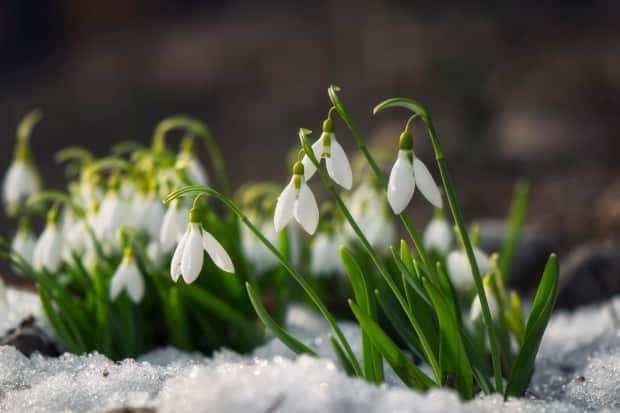May snow expected in southwest Sask., Environment Canada says

If you were thinking about starting your garden this week, it might be best to put those plants on hold.
Environment Canada said parts of Saskatchewan are expected to see snow beginning late Thursday and continuing into Friday.
Terri Lang, a meteorologist at Environment and Climate Change Canada, said Regina is likely to see snow.
"Most of the weather models are now agreeing that it will change to snow, the most likely place for the snow is certainly in the southwest corner of the province," she said.
Lang said even though there will be snow, there likely won't be any accumulation of it due to warmer weather. However, she said on Saturday and Sunday morning, the area might see temperatures go below the freezing mark.
"I think it'll certainly be a shock to most people, especially after these 30 degree temperatures," she said. "[It is] certainly not time to put out bedding plants or tomato plants right yet because it's going to be quite [a] cold weekend."
What the snow means for your plants
Karen Vanduyvendyk, the owner of Dutch Growers in Regina, said she usually advises her customers to hold off on starting their gardens until after the May long weekend because snow happens quite frequently this time of year.
For those who have already started their gardens, she has some tips for the upcoming snow.
She said if people have already started planting their perennials, trees and shrubs, the moisture from the snow should help with frost damage.
"If it's wet, that's much better than if it's dry," Vanduyvendyk said. "A plant that's wet will actually release heat from the plant and create almost like an ice cap around the plant and that will protect it a little bit from frost damage."
She said if people have planted their bedding plants and vegetables, it is important to either bring in the plants or cover them up.
"We would recommend that they use a frost blanket-type product as opposed to a sheet," Vanduyvendyk said. "The reason being is the frost blankets are a lighter weight material that hold in just as much heat as, say, a big heavy blanket, so you don't have that crushing effect on your plant."
She said to make sure the frost blanket is sealed along the edges so none of the cold air can get in.
Vanduyvendyk said if plants or vegetables are showing signs of frost damage, it is best to leave them alone for a few days.
"Don't drown them with water, don't let them go too dry, but just let them sort of try and recoup on their own," she said.
"Minus two isn't super cold and a lot of the annuals that have been out there and been hardened off will probably be okay. It's your vegetables and things that you're going to want to make sure you try and protect and cover this weekend."

